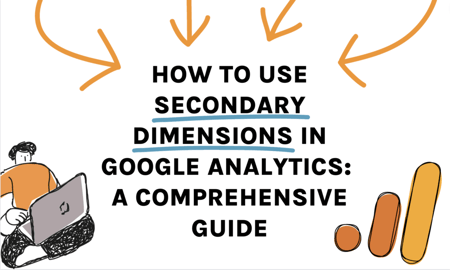Search Engine Optimization Analytics Introduced: Discovering Secondary Dimensions for Actionable Information
Wiki Article
Transform Your Data Recognizing With Second Dimensions
Exploring information through the lens of second dimensions opens up a world of untapped insights, supplying a much more nuanced viewpoint on the ins and outs of your dataset. By deciphering the layers under the surface metrics, you can uncover patterns and relationships that might have or else gone undetected, leading the way for informed decision-making and critical optimizations. This critical use of second dimensions not only enriches your data comprehension yet additionally offers as a stimulant for unlocking the full possibility of your analytics undertakings.Benefits of Additional Measurements

Additional measurements also enable organizations to perform even more in-depth performance examinations. By layering additional measurements onto existing data, companies can assess the influence of numerous variables on key metrics, assisting them make more enlightened choices. Furthermore, additional measurements facilitate the recognition of brand-new possibilities for optimization and growth by revealing relationships that may have otherwise gone undetected. Overall, the use of additional dimensions causes extra durable and insightful information analysis, encouraging services to drive critical actions based on a much deeper understanding of their data.

How to Carry Out Secondary Measurements
To efficiently execute additional dimensions in information analysis, organizations need to initially identify vital variables that align with their logical objectives and goals. It is important to consider exactly how these second measurements will certainly offer additional context and depth to the main data being analyzed.
Analyzing Data With Secondary Measurements
Utilizing secondary measurements in information analysis boosts the deepness and context of insights originated from key information. By incorporating second dimensions into your evaluation, you can obtain an extra thorough understanding of the connections and patterns within your data. This procedure includes checking out the primary data through different lenses or point of views, which can expose covert correlations or trends that might not be instantly noticeable when assessing the information using just primary dimensions.Evaluating data with additional measurements permits you to segment and team your information in numerous methods, providing a much more nuanced sight of your look at these guys dataset. secondary dimensions. This division can aid you identify particular variables that might be influencing the results you are examining. By piercing down into the information using second measurements, you can discover beneficial understandings that can direct decision-making and technique advancement
Finest Practices for Additional Measurements
When integrating secondary measurements right into data evaluation, precision in defining the dimensions is essential for extracting purposeful insights. It is important to select additional dimensions that enhance the primary data properly.Another finest practice is to stay clear of redundancy in dimensions. Ensure that the second dimensions include new point of views or details to the evaluation, instead of duplicating information already existing in the key dimensions. This will certainly assist stop complication and simplify the analysis of the data.
Furthermore, it is necessary to think about the scalability of the evaluation when picking second dimensions. Select dimensions that can be conveniently expanded or adjusted as required to suit future information requirements or modifications in analytical focus. By complying with these best methods, analysts can make best use of the value of secondary dimensions in information analysis and gain much deeper understandings This Site right into their datasets.
Making Best Use Of Insights Through Secondary Dimensions
Integrating additional dimensions purposefully boosts information analysis by offering a much deeper understanding of the connections within the dataset (secondary dimensions). By making best use of insights via secondary dimensions, analysts can reveal important patterns, patterns, and dependencies that may not be immediately noticeable when taking a look at the data via key dimensions aloneOne trick benefit of utilizing second dimensions is the capacity to sector and filter data a lot more precisely. This division permits a much more granular evaluation of details subsets within the dataset, enabling analysts to determine relationships and causations that could have or else been overlooked.
Furthermore, second dimensions can assist in contextualizing primary information factors by including layers of information that supply an even more detailed view of the information. This contextualization is crucial for making educated choices based upon an all natural understanding of the dataset.
Verdict
Finally, incorporating secondary dimensions in data analysis processes offers a more extensive and nuanced understanding of details, resulting in enhanced understandings and strategic decision-making. By incorporating added variables that straighten with analytical Visit This Link objectives, concealed relationships and fads can be revealed, offering an extra thorough and contextualized view of data. This technique makes best use of the possibility for optimization and discovers new chances within operations.In general, the application of secondary dimensions leads to much more durable and insightful data evaluation, empowering companies to drive tactical actions based on a deeper understanding of their data.
Utilizing second dimensions in data analysis improves the deepness and context of understandings derived from key data.Evaluating information with second measurements enables you to section and group your information in different ways, offering a much more nuanced sight of your dataset.When including additional measurements right into information analysis, accuracy in defining the measurements is essential for extracting meaningful understandings. Make sure that the additional measurements include brand-new viewpoints or details to the analysis, rather than replicating details already existing in the primary measurements.
Report this wiki page